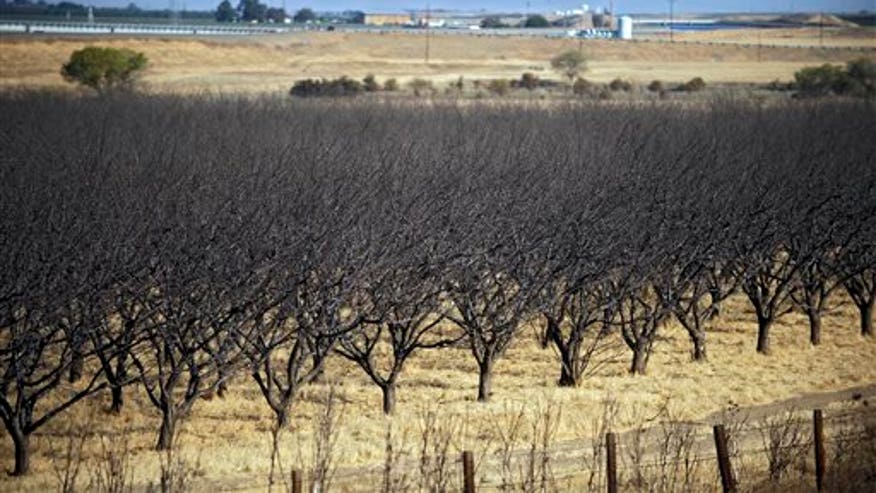The following article is about Almond Production in California
and the amount of water needed.
This article is very timely as Soil Secrets Soil Ecology products are being used by California's Almond producers proving to help with the water problem while also helping to produce good crops using less water.
Is California Sucking the Almond Industry Dry?
If you don’t live in California, the serious drought—which is now in its fourth painstaking year—may not affect your everyday life. But you are probably eating their almonds. The state produces 80% of the world’s almonds and the industry has been taking the brunt of the water shortage ever since.
“Blame game doesn’t help. Yes, it takes about one gallon of water to produce one almond. And, it also takes 1.4 gallons of water to produce two olives. And, four glasses of milk needs about 143 gallons of water to produce. Should we stop making milk in California too? Where does it end?” says Dr. Harinder Grewal, Senior Agricultural Inspector for the Department of Agriculture at Stanislaus County, California.
California produces nearly half of all U.S. grown fruits, nuts, and vegetables, according to the California Department of Food and Agriculture. But the real money maker is almond production which contributes over 100,000 jobs and $11 billion to the state’s economy, according to the University of California Agricultural Issues Center.
Janet Daniel, an almond farmer who runs J.D. Almond Farms in California, says it’s been very frustrating to read reports that they’re to blame for the drought.
“A lot of the reports are inaccurate and extremely misleading. This is a food product that is very important. Yes, it takes water to produce it, but nothing goes to waste. It’s a 100% contained product. We have everything computerized. Every drop of water is calculated,” says Daniels, whose farm produces over 1.5 million pounds of almonds a year.
“All of California has been impacted by this historic drought, but as conversation about the drought has progressed, there have been claims about almonds and agriculture more generally that lack context, or are blatantly wrong,” says Robert Curtis, Director of Agricultural Affairs at the Almond Board of California.
“The crop about to be harvested is estimated to be down 4% from last year’s crop, which was down from the year before that. Drought and water stress can impact almond tree growth and crop productivity for a 2-4 year period, after the stress subsides,” says Curtis.
According to Grewal, California has only had about 4.3 inches of rain so far this year (last measured on May 31st).
“The situation we’re in is scary but the good thing it that it wakes people up. We need to plan for the long term. California depends on agriculture. We all need food and we can’t depend on food from other countries. This is a national security issue,” adds Grewal.
According to the Public Policy Institute of California, agriculture uses about 41% of California’s total water supply – not 80% as often quoted.
“Farmers are used to getting 30-40 inches of water, now they get 18-20 inches. Most farmers lost 50% of their water supply,” says Grewal.
The Almond Board of California says that in 2014, the drought has cost farmers $1.5 billion dollars and the loss of more than 17,000 jobs.
Steve Knell, a General Manager at the Oakdale Irrigation District says it’s important for people to realize that it takes a lot of water to keep our mouths full.
“It takes about 1 million gallons of water per year to sustain a family of 4 in America. If you want to help reduce the water resource shortfall we face in this drought I think you have two choices: either stop watering the lawn or stop eating.”
Grewal says we need to stop pointing fingers and look for more long and short-term solutions instead.
“We’re in trouble but we can’t stop growing things. We need to find ways to conserve water and educate people instead of blaming anyone. Almonds bring revenue. We need to protect this industry. Poor leadership in the past has gotten us in this situation and we need to find solutions to get out of it," says Grewal.
Follow Jade Scipioni on Twitter @jadescipioni
Michael Martin Meléndrez
Managing Member of Soil Secrets LLC
505 550-3246
www.soilsecrets.com


Comments